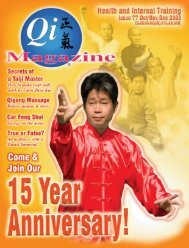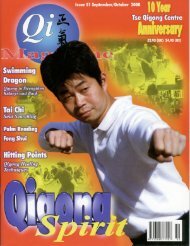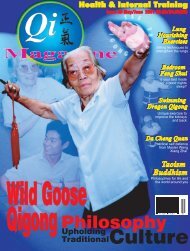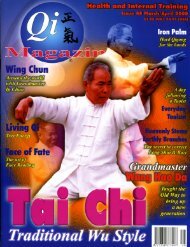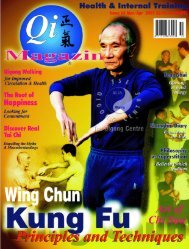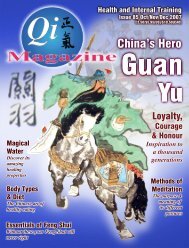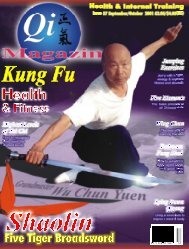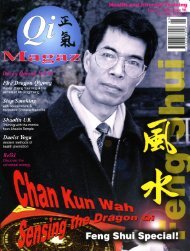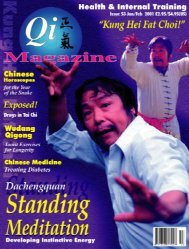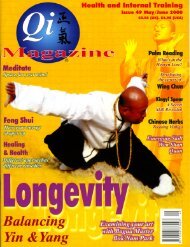You also want an ePaper? Increase the reach of your titles
YUMPU automatically turns print PDFs into web optimized ePapers that Google loves.
19. Jum Sau – Sinking Hand<br />
i. Bring the right hand back to the centre (a little bit like Wu Sau).<br />
Jum Sau is first mentioned in Siu Lim Tao. When someone punches along the centre, we can use this<br />
hand to stop or block but we should remember that its purpose is to push the opponent’s hand<br />
downwards. We must also remember not to push down too far otherwise the opponent will be able to<br />
come back and hit us.<br />
Wing Chun is always concerned about protecting the centre of the body and as our opponent also<br />
wants to attack and open this area. When we lose our centreline, then everything will fall apart. This<br />
is the same as life. We must know our centre, our purpose and principles. Without these our lives will<br />
be wasted.<br />
Fig 34<br />
20. Chaan Sau (Mo Sau) – Shovel Hand<br />
Fig 35 Fig 36<br />
i. Place the left hand over the right Wu Sau.<br />
ii. Snap the left hand forwards from the right hand to the centre (a little like<br />
Wu Sau). Meanwhile, withdraw the right hand back as a fist beside the<br />
chest.<br />
Chaan Sau is used just before someone grabs your wrist. Just as they are about<br />
to grab, you withdraw your hand and sweep them away with the other hand.<br />
Remember that the two hands must move together, otherwise it will not work. So<br />
one goes out and the other withdraws back in. Also remember that once they have<br />
grabbed your hand, you cannot use Chaan Sau. If you are grabbed, then you<br />
should change to Tan Sau and walk towards your opponent’s centre.<br />
This hand is also called Mo Sau.<br />
In many situations once we have finished Jum Sau, we will hold the position<br />
and so the hand will become Wu Sau. Jum Sau is moving whilst Wu Sau is stationary.<br />
21. Sau Kuen – Withdraw Fist<br />
Fig 37 Fig 38 Fig 39 Fig 40<br />
i. Open the left palm.<br />
ii. Turn the wrist to the left side in a clockwise circle.<br />
iii. Withdraw the fingers one by one, beginning with the small<br />
finger then the ring finger, middle finger, index finger and<br />
then the thumb, so making a fist.<br />
iv. Withdraw the fist back to the side of the chest.<br />
Each time we finish. we withdraw the fist. However, we need<br />
to exercise the wrist, fingers and do this by stretching them out<br />
and then making a tight fist. When we pull back quickly, this<br />
develops the elbow energy behind us. The same strength is<br />
used in the elbow and the shoulder. When the fist is at the<br />
side of the chest, we should then relax and just hold the<br />
position clearly.<br />
In Wing Chun we need to have flexible joints and strong<br />
bones. That is why we take every opportunity to train our<br />
body.<br />
page 44 Qi Magazine Apr/May/June 2007



